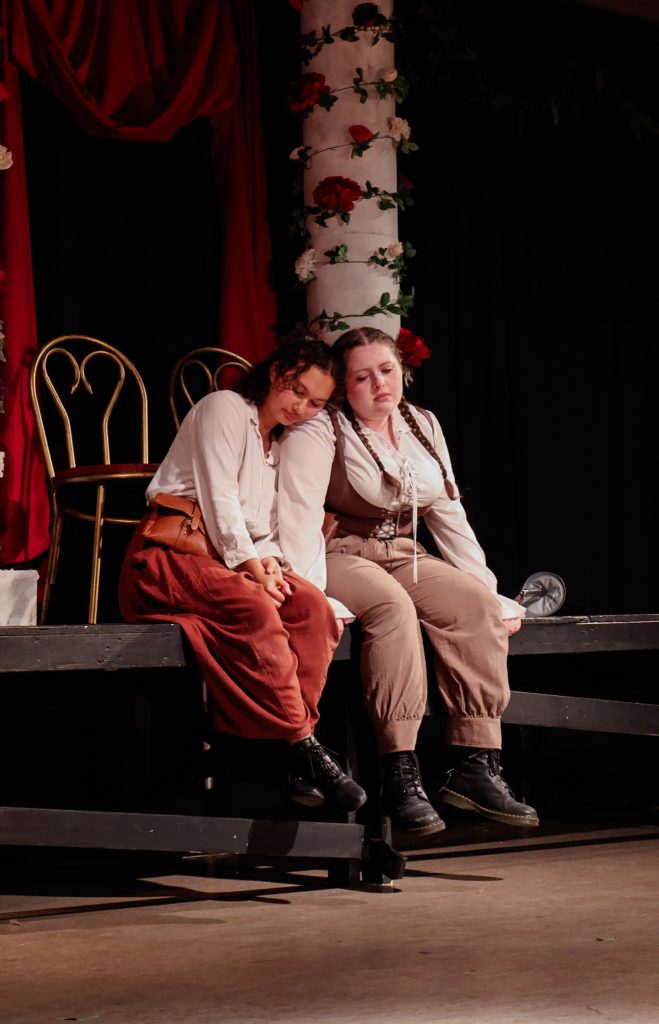The Hinman Production Company presented “Rosencrantz & Guildenstern Are Dead” this past week in the Hinman Commons. The production follows the plot of William Shakespeare’s “The Tragedy of Hamlet,” but through the perspective of two minor characters, Rosencrantz and Guildenstern.
The play focuses on the escapades of the eponymous characters as they slowly come to terms with their fate in “Hamlet,” which includes them meeting an untimely end, as the title suggests. The characters, described as friends of Hamlet in the original story, do not know anything about themselves besides what they learn throughout the play. Throughout the story, the two try to figure out who they are and what they did to deserve their fate.
Elaina Pecora, one of the show’s directors and a sophomore majoring in English, explained its complexity.
“It is such a heavy show,” Pecora said. “There is so much material there that, throughout the process, we were picking it apart and still finding more and more things that you need to sit [with] for a while.”
The show’s complicated nature was mostly portrayed through the acting of the two leads, Zoe Steinberg, the company’s president and a junior majoring in English, and Tamar Hyman-Fessler, an undeclared freshman. Throughout the two-and-a-half-hour production, these two do not leave the stage except for intermission.
While other characters contribute to the plot of the show, Steinberg and Hyman-Fessler are the ones who mainly drive the show along, even with their characters’ confusion in their roles. The show also presents ideas that break the fourth wall, sometimes referring directly to the audience.
The show tries to blur the lines between the characters knowing they are actors and being immersed in the story. While this may have been confusing at times to the audience, the hard work of the actors helped to ease the confusion.
Karis Mueller, another one of the directors and a junior double-majoring in English and philosophy, politics and law, described how the show can be difficult to understand.
“The show is not spoon-feeding its audience at all,” Mueller said. “It’s not trying to [simplify] things down, so there’s kind of that challenge of wanting the audience to pick up on things, but also not wanting to spoon-feed them.”
The weaving in and out of “Hamlet” during the show was an impressive feat by those who worked on it. Little details throughout the production helped audiences understand its complexities. This was especially apparent with the large death scene at the end of the show, which portrayed the eight deaths that occurred during “Hamlet.” Steinberg explained this scene and what it meant to her as an actor.
“It’s just so much fun to do that because there’s so much physical action on stage and it’s also so much opportunity for acting,” Steinberg said. “I feel like this show really is a dream for a lot of actors because it pulls on comedy, but it’s a true tragic comedy. You get to do everything, which is so awesome.”



